How to Make Your Picnic More Sustainable?
This article explores practical tips and ideas to help you enjoy a more eco-friendly picnic. Discover ways to minimize waste, choose sustainable products, and enjoy nature responsibly while having fun.
When it comes to food, making mindful choices can significantly reduce your picnic's environmental impact. Opt for organic, locally-sourced, and seasonal foods. Not only do these options taste better, but they also support local farmers and reduce the carbon footprint associated with transporting food long distances. Imagine biting into a juicy, ripe tomato that was picked just hours before your picnic—it's not just delicious, it's also a step towards sustainability!
Now, let’s talk about supplies. Instead of using disposable plates and utensils, consider investing in reusable picnic gear. This not only cuts down on waste but also adds a touch of elegance to your outdoor dining experience. Think about it: a sturdy, colorful plate can elevate your meal, making it more enjoyable. Plus, you can mix and match your items for a fun, personalized look. Here are some great options:
- Stainless Steel Utensils - Durable and stylish.
- Glass Containers - Perfect for salads and snacks.
- Cloth Napkins - A chic alternative to paper.
Incorporating biodegradable or compostable products into your picnic can minimize landfill waste. These items break down naturally, reducing the burden on our planet. For instance, consider using compostable plates made from sugarcane or palm leaves. They’re sturdy enough for hearty meals and will decompose in a compost bin, returning nutrients back to the earth.
Speaking of composting, setting up a compost bin at your picnic can help manage food scraps responsibly. It’s surprisingly easy! Just designate a spot for your compost and encourage everyone to toss in their leftovers. This not only enriches the soil but also teaches others about sustainable practices. Plus, who doesn’t love the idea of their food scraps turning into nutrient-rich compost for future gardens?
Let’s not forget about drinks! Selecting beverages in eco-friendly packaging or bulk options can lessen your environmental footprint. Instead of individual plastic bottles, why not bring a large refillable container? You can fill it with homemade lemonade or iced tea, reducing single-use plastics while keeping everyone refreshed. Cheers to that!
Your picnic blanket can also be a sustainable choice. Look for blankets made from recycled materials or organic cotton. Not only do they provide a comfortable spot to sit, but they also contribute to your eco-friendly efforts. A beautiful, sustainable blanket can make your picnic feel cozy and inviting, turning a simple meal into a delightful experience.
Implementing effective waste management practices during your picnic ensures a cleaner environment. Make it a point to sort recyclables, compost, and dispose of waste responsibly while enjoying your time outdoors. Bring along separate bags for trash, recycling, and compost. This simple act can make a world of difference in keeping natural spaces clean.
Understanding and applying Leave No Trace principles can help preserve natural spaces. These guidelines encourage you to respect the environment while enjoying it. Here are some key principles to keep in mind:
- Plan Ahead - Know the area and its regulations.
- Travel and Camp on Durable Surfaces - Protect the vegetation.
- Dispose of Waste Properly - Pack it in, pack it out.
Finally, participating in local conservation efforts during your picnic can enhance your connection to nature. Consider organizing a small cleanup after your meal or partnering with local organizations dedicated to preserving the environment. Not only will you enjoy your outdoor gathering, but you’ll also contribute to the health of the ecosystem. It’s a win-win situation!
1. What are some eco-friendly food options for a picnic?
You can choose organic, locally-sourced, and seasonal foods to minimize your environmental impact.
2. How can I manage waste during my picnic?
Bring separate bags for trash, recycling, and compost to ensure proper waste management.
3. Are there sustainable alternatives to disposable picnic supplies?
Yes! Opt for reusable plates, utensils, and containers to enhance your picnic experience.
4. What are Leave No Trace principles?
These are guidelines designed to help people enjoy the outdoors while minimizing their impact on the environment.
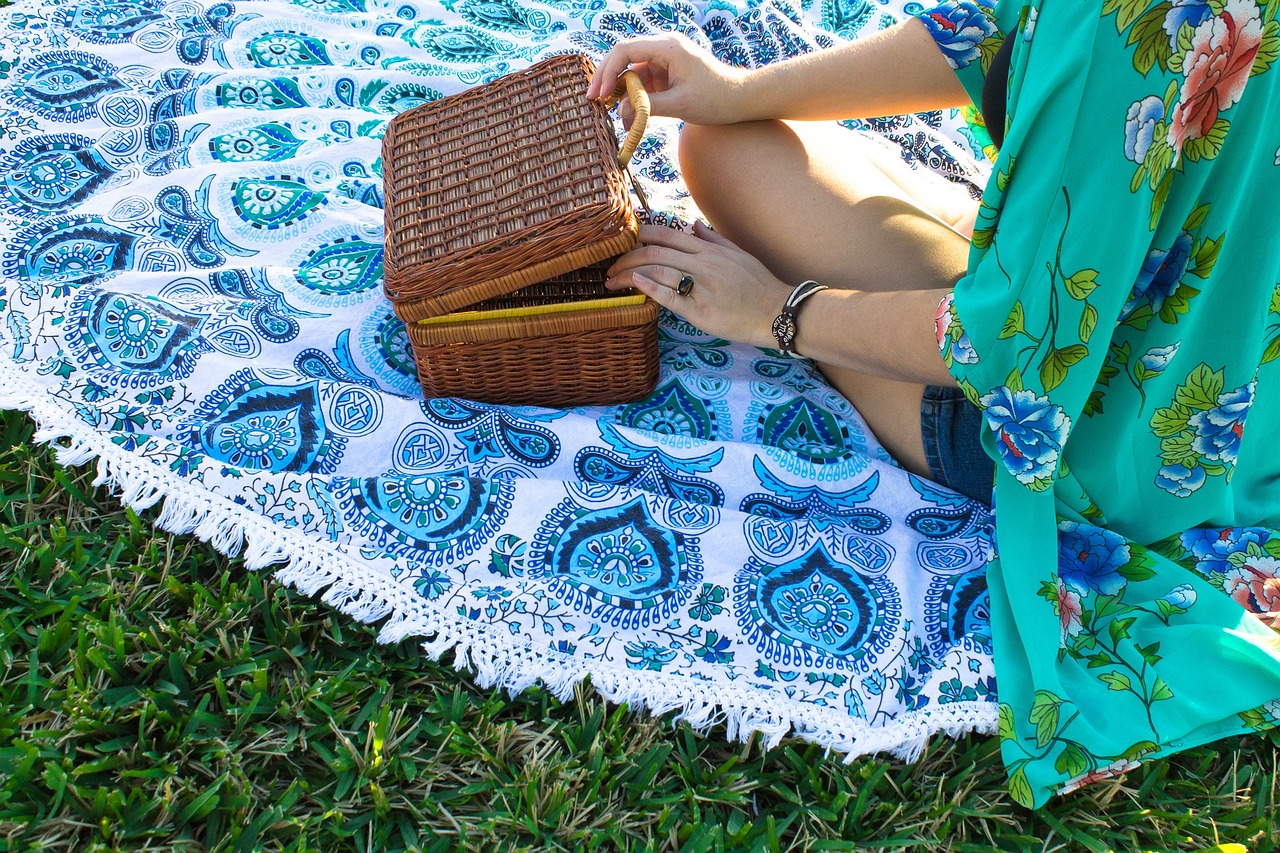
Choosing Eco-Friendly Food Options
When it comes to planning a picnic, one of the most impactful choices you can make is selecting eco-friendly food options. Imagine biting into a juicy, locally-grown tomato or savoring a crisp salad made from organic greens; not only are these choices delicious, but they also play a significant role in reducing your environmental footprint. By opting for organic, locally-sourced, and seasonal foods, you not only support local farmers but also minimize the carbon emissions associated with transporting food over long distances.
Think about it: when you choose food that is in season and grown nearby, you're not just making a healthier choice for yourself; you're also making a statement about your commitment to sustainability. Seasonal foods are typically fresher, tastier, and packed with nutrients, making them the ideal choice for a picnic. Plus, they often come with less packaging, which is a win-win for both your health and the planet.
Let's delve deeper into some practical tips for choosing eco-friendly food options:
- Shop at Local Farmers' Markets: These markets are treasure troves of fresh produce and artisanal products. Supporting them helps bolster your local economy while ensuring you get the freshest ingredients.
- Prioritize Organic: Organic farming practices are better for the environment, as they avoid synthetic pesticides and fertilizers. This means cleaner soil and water for everyone.
- Plan Your Menu Wisely: Consider dishes that can be made in advance and transported easily. Salads, wraps, and grain bowls are excellent choices that can be enjoyed cold and are easy to pack.
Remember, the goal is not just to fill your picnic basket but to make mindful choices that reflect a commitment to the environment. For instance, instead of pre-packaged snacks that come with a lot of plastic, try making your own trail mix with bulk nuts and dried fruits. This not only tastes better but also significantly reduces waste.
In addition to food choices, consider the impact of your drinks. Opt for beverages that come in glass or aluminum containers, which are more easily recyclable than plastic. If you’re planning to bring water, consider a large refillable container instead of individual bottles—this simple switch can drastically cut down on plastic waste.
In conclusion, choosing eco-friendly food options for your picnic is about more than just what you eat; it’s about embracing a lifestyle that prioritizes the health of our planet. By making informed decisions, you can enjoy a delightful outdoor feast while contributing to a more sustainable future. So next time you pack your picnic basket, remember: every bite counts in the fight for a healthier planet!
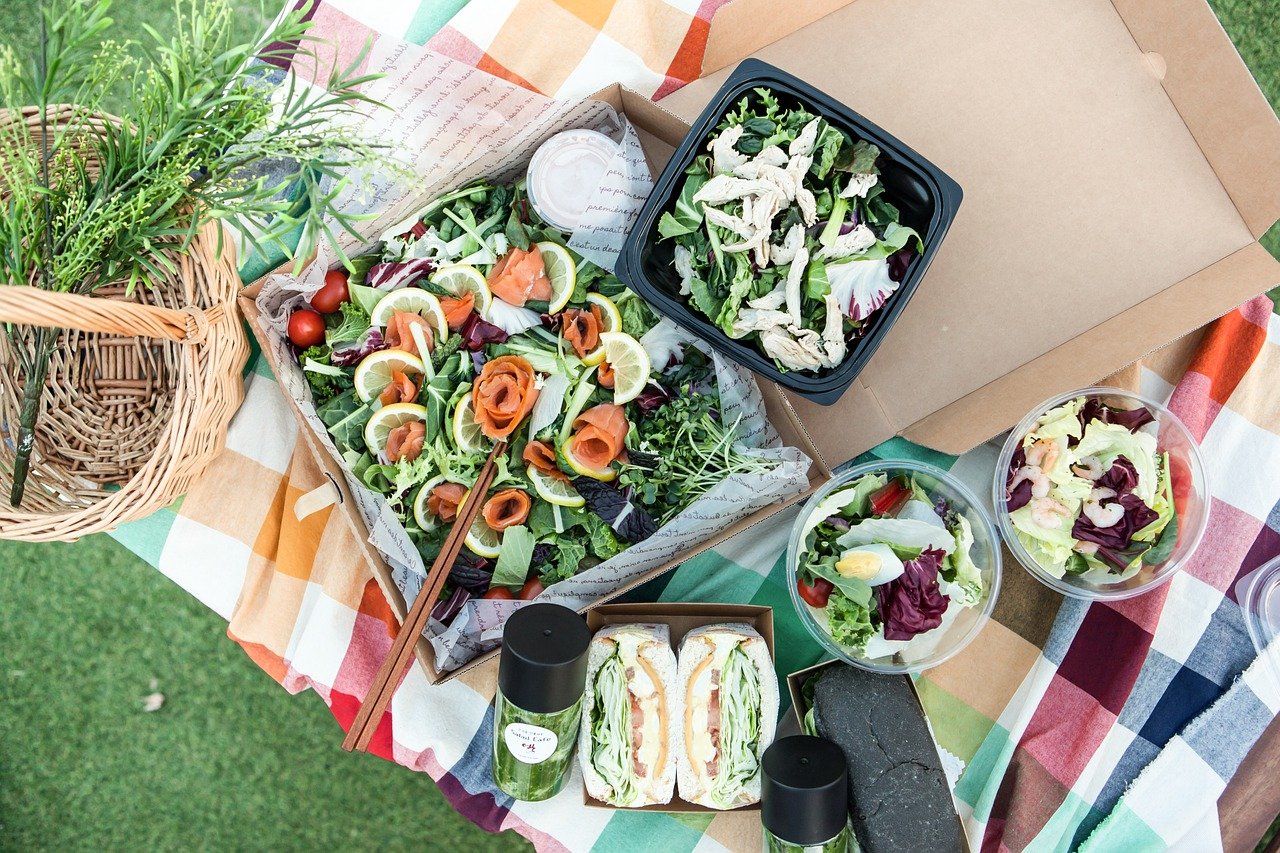
Reusable Picnic Supplies
When it comes to enjoying a picnic, the last thing you want is to be surrounded by mountains of waste. This is where come into play! Choosing items that you can wash and use again not only helps the environment but also makes your picnic experience feel a bit more special. Imagine sitting on a beautiful blanket, sipping from a sturdy reusable cup, and enjoying your meal from a lovely plate that you can take home and wash instead of tossing it in the trash. Doesn’t that sound much nicer?
One of the biggest advantages of using reusable supplies is the reduction of single-use plastics. By swapping out plastic plates and utensils for their reusable counterparts, you’re actively participating in reducing pollution and conserving resources. Not to mention, many reusable items are made from durable materials like stainless steel, bamboo, or silicone, which are not only better for the planet but often more aesthetically pleasing too!
Let’s dive into some of the essential reusable picnic supplies you might consider bringing along:
- Plates and Bowls: Opt for bamboo or stainless steel plates that are lightweight and easy to clean.
- Utensils: Look for reusable cutlery made from sustainable materials like bamboo or recycled stainless steel.
- Cups and Mugs: Invest in insulated mugs or reusable cups that keep your drinks at the perfect temperature.
- Food Containers: Glass or silicone containers are perfect for packing snacks and leftovers without the worry of spills.
- Napkins: Cloth napkins are a chic alternative to paper ones and can be washed and reused.
Using these reusable items not only minimizes waste but also adds a touch of elegance to your picnic setup. Plus, they often come in a variety of colors and designs, allowing you to express your personal style while being eco-conscious. Imagine pulling out a vibrant, patterned picnic blanket and setting it with matching plates and utensils. It’s like setting the stage for a delightful outdoor dining experience!
But wait, there’s more! Beyond aesthetics and waste reduction, using reusable supplies can also save you money in the long run. Think about it: every time you opt for a disposable item, you’re spending money that could be saved by investing in durable, reusable options. It’s a win-win situation!
In conclusion, embracing reusable picnic supplies not only enhances your outdoor dining experience but also contributes significantly to sustainability efforts. So, the next time you plan a picnic, consider packing up your favorite reusable items. You’ll feel good about your choices, and you’ll enjoy your time outdoors even more.
Q: What are the best materials for reusable picnic supplies?
A: The best materials include bamboo, stainless steel, silicone, and glass. These materials are durable, easy to clean, and environmentally friendly.
Q: How do I clean reusable picnic supplies?
A: Most reusable items can be washed with soap and water. Some may even be dishwasher safe, making cleanup a breeze!
Q: Are there any eco-friendly brands for picnic supplies?
A: Yes! Many brands focus on sustainability. Look for products labeled as eco-friendly or made from recycled materials.
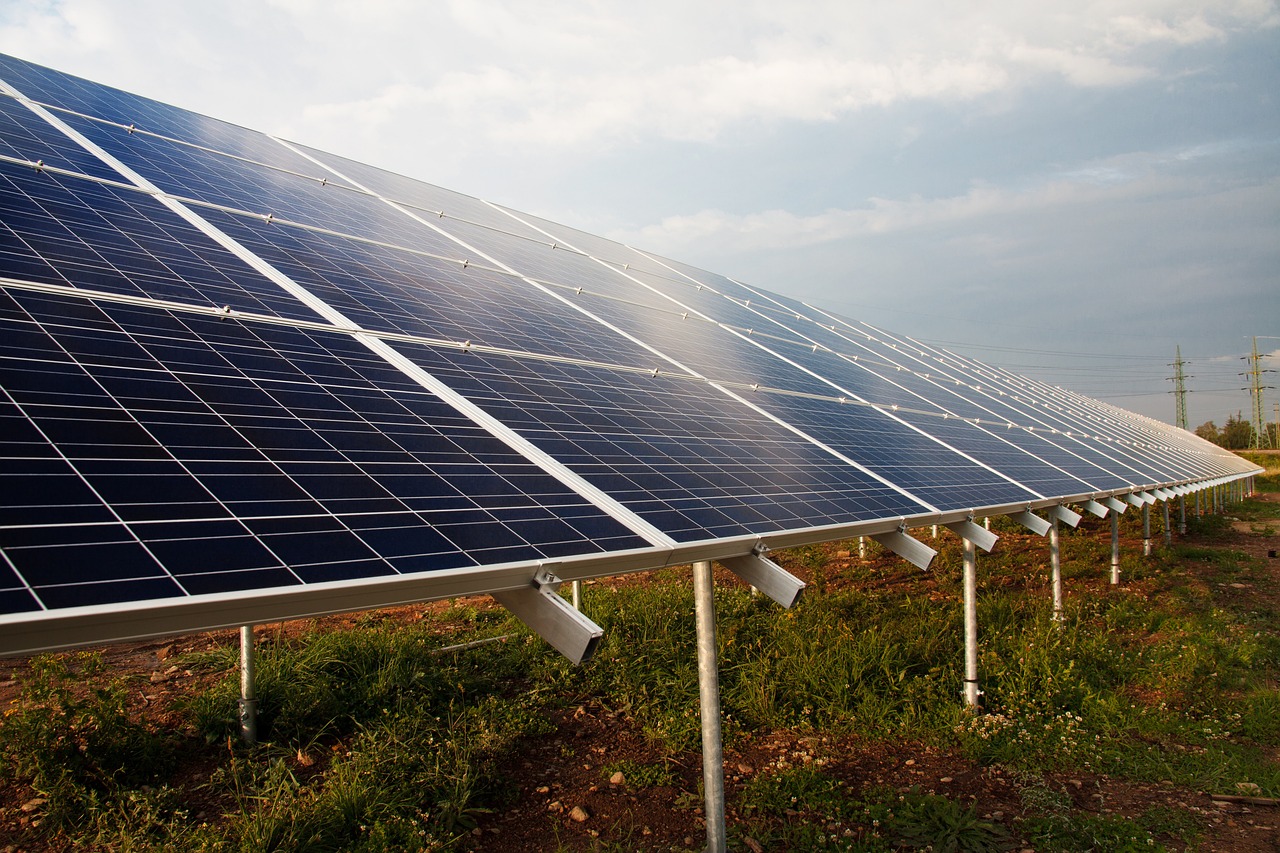
Biodegradable and Compostable Items
When it comes to enjoying a picnic, we often overlook the impact of the items we use. That's where biodegradable and compostable items come into play! These eco-friendly alternatives can significantly reduce our environmental footprint while still allowing us to enjoy our time outdoors. But what exactly do these terms mean? Biodegradable items are those that can break down naturally over time, thanks to the action of microorganisms. On the other hand, compostable items not only break down but do so in a way that enriches the soil, returning valuable nutrients back to the earth.
Using biodegradable and compostable products at your picnic is a fantastic way to minimize landfill waste. Imagine this: instead of tossing your plastic plates and cutlery into the trash, you can use products that will decompose and contribute positively to the environment. It's like giving back to nature while enjoying a meal! Here are a few examples of biodegradable and compostable items you might consider:
- Compostable plates: Made from materials like sugarcane or bamboo, these plates can handle your delicious food without harming the planet.
- Biodegradable utensils: Opt for forks, knives, and spoons crafted from plant-based materials that will break down after use.
- Compostable cups: These cups, often made from PLA (polylactic acid), are perfect for your beverages and can go straight into the compost bin after your picnic.
Not only do these products help reduce waste, but they also often come in stylish designs that can enhance your picnic aesthetic. Imagine sipping your drink from a chic compostable cup while lounging on a beautiful blanket, surrounded by nature. It's a win-win situation!
One of the best parts about using biodegradable and compostable items is that they are becoming increasingly accessible. Many grocery stores and specialty shops now offer a wide range of these products. You can easily find them in bulk, which not only saves you money but also reduces packaging waste. Plus, many of these items are designed to be sturdy and reliable, so you won't have to worry about them breaking during your picnic.
However, it's essential to remember that biodegradable and compostable items still require proper disposal. Make sure to have a designated compost bin at your picnic site. This way, you can ensure that these items break down correctly and contribute to enriching the soil. If you're unsure about how to set up a compost bin, consider bringing a small container for collecting food scraps and other compostable materials. It's a simple step that can make a huge difference!
In conclusion, incorporating biodegradable and compostable items into your picnic is not just a trend; it's a crucial step toward sustainability. By making these mindful choices, you can enjoy your time outdoors while also caring for the planet. So next time you plan a picnic, consider these eco-friendly options and be a part of the solution!
Q: What is the difference between biodegradable and compostable?
A: Biodegradable items break down naturally over time, while compostable items break down in a way that enriches the soil and contributes nutrients back to the earth.
Q: Can I compost biodegradable items in my home compost bin?
A: Yes! If your home compost bin maintains the right conditions, many biodegradable and compostable items can break down effectively.
Q: Are biodegradable products always better for the environment?
A: Not necessarily. It's essential to consider the entire lifecycle of the product, including how it's made, transported, and disposed of. Always choose products that are certified and made from sustainable materials.
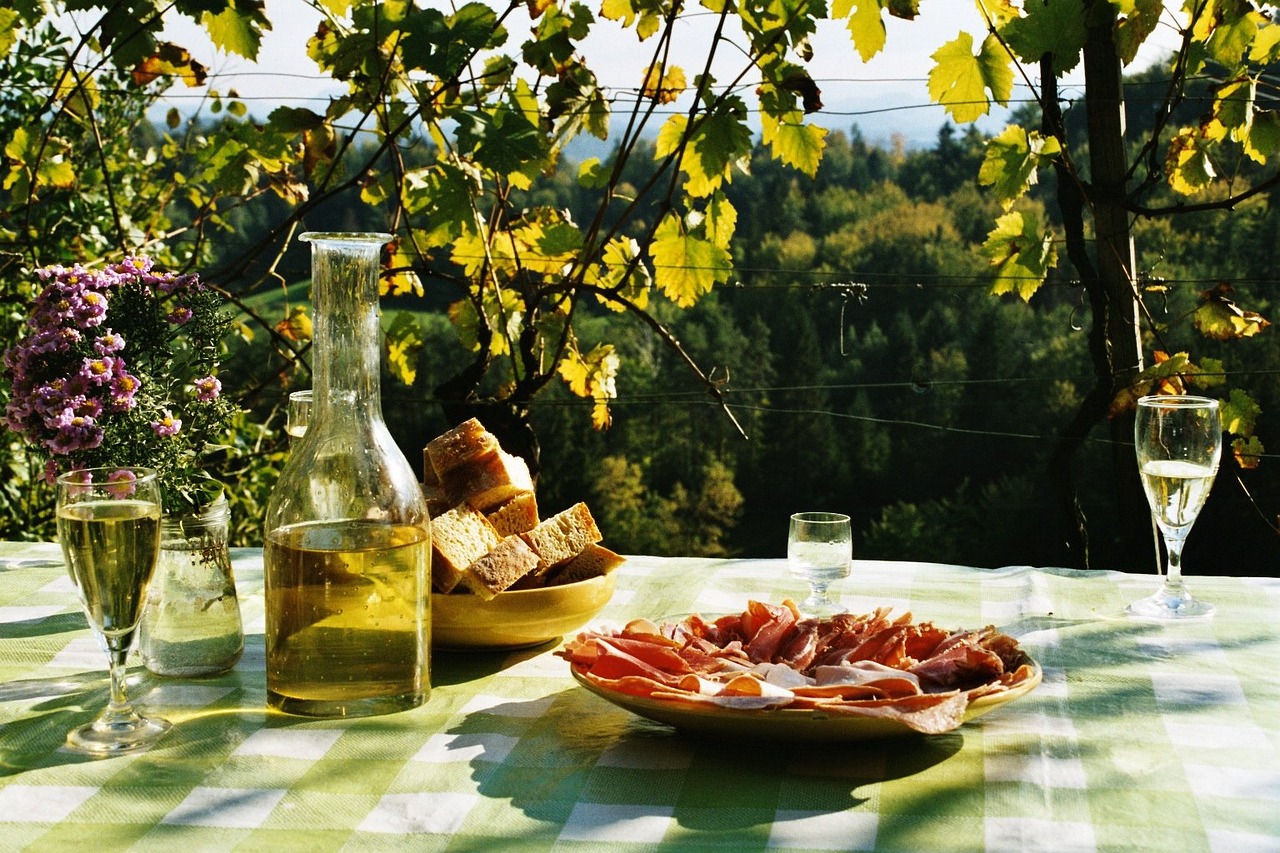
Compost Bins for Leftovers
When you're out enjoying a picnic, the last thing on your mind might be what to do with leftover food scraps. However, incorporating a compost bin into your picnic plans can make a significant difference in reducing waste. Imagine enjoying a sunny day outdoors while also giving back to the earth—sounds pretty great, right? By composting your leftovers, you not only minimize landfill waste but also create nutrient-rich soil for plants. It’s like turning your picnic into a mini garden project!
Setting up a compost bin at your picnic is surprisingly easy. You can use a simple container, like a small bucket with a lid, to collect your organic waste. Here’s how to get started:
- Choose the Right Container: Look for a container that’s easy to transport and has a secure lid to keep pests away.
- Know What to Compost: Typical items to compost include fruit and vegetable scraps, coffee grounds, and eggshells. Avoid meat, dairy, and oily foods as they can attract unwanted critters.
- Keep it Simple: If you’re worried about the mess, use compostable bags to line your container. This way, you can easily dispose of the contents when you’re done.
After your picnic, simply take the compost bin home or to a local composting facility. If you have a garden, you can even add the compost to your soil, helping to enrich it naturally. Think of it as a cycle of sustainability—what was once your leftover food becomes food for the earth!
Incorporating composting into your picnic not only helps the environment but also educates those around you about the importance of waste management. It’s a fantastic conversation starter and a way to inspire others to think about their environmental impact. So, the next time you pack your picnic basket, don’t forget to include a compost bin. It’s a small step that can lead to a much larger impact on the planet.
1. What can I compost during my picnic?
You can compost fruit and vegetable scraps, coffee grounds, and eggshells. Just avoid meat, dairy, and oily foods to keep pests away.
2. How do I transport a compost bin to my picnic?
Choose a lightweight, portable container with a secure lid. You can even use compostable bags to line the container for easy cleanup.
3. Where should I take my compost after the picnic?
You can take the compost home to add to your garden or find a local composting facility that accepts organic waste.
4. Why is composting important?
Composting reduces landfill waste, enriches soil, and helps close the nutrient cycle, making it a key practice for sustainability.

Choosing Sustainable Beverages
When it comes to planning a picnic, the beverages you choose can have a surprisingly significant impact on your environmental footprint. Instead of reaching for those single-use plastic bottles or cans, why not explore more sustainable options that are not only good for the planet but also add a unique twist to your outdoor gathering? Think of it this way: just as you wouldn't serve fast food at a gourmet dinner, why would you settle for mass-produced drinks when you can offer something more thoughtful and eco-friendly?
One of the simplest ways to make your beverage choices more sustainable is to opt for bulk beverages. This could mean purchasing a large container of your favorite drink—like lemonade, iced tea, or even a local craft beer—and bringing a reusable pitcher or bottle to serve it in. Not only does this reduce the amount of packaging waste, but it also allows you to enjoy a refreshing drink without the guilt of contributing to plastic pollution.
Additionally, consider sourcing beverages that come in eco-friendly packaging. Many companies are now producing drinks in glass bottles or aluminum cans, which are more recyclable than plastic. If you're a fan of sparkling water or soda, seek out brands that prioritize sustainability in their production processes. You might be surprised to find local options that are both delicious and environmentally responsible!
Another great idea is to incorporate seasonal and local beverages into your picnic. This could be as simple as brewing a batch of herbal iced tea using fresh herbs from your garden or local farmer's market. Not only does this support your local economy, but it also minimizes the carbon footprint associated with transporting beverages long distances. Plus, there's something incredibly satisfying about sipping on a drink that you know is fresh and locally sourced.
To further enhance your sustainable beverage experience, think about the serving methods. Instead of disposable cups, bring along your own reusable cups or mason jars. They are not only stylish but also practical. You can even personalize them for your guests, adding a fun touch to your picnic. If you’re worried about spills, consider using silicone lids or reusable straws to keep everything tidy and enjoyable.
In summary, choosing sustainable beverages for your picnic is all about making mindful decisions that reflect your commitment to the environment. Whether it's opting for bulk drinks, selecting eco-friendly packaging, or sourcing local options, each choice contributes to a greater cause. So, next time you’re planning a picnic, remember that every sip can make a difference!
- What are some examples of sustainable beverages? Look for local craft beers, organic juices, and herbal teas made from fresh ingredients.
- How can I reduce waste when serving drinks at a picnic? Use reusable containers, cups, and straws instead of disposable options.
- Are there any eco-friendly drink brands I should consider? Yes, many brands focus on sustainable practices; check for those that use recyclable packaging and local ingredients.

Eco-Friendly Picnic Blankets
When it comes to enjoying a delightful picnic, the blanket you choose can make all the difference—not just in comfort but also in sustainability. are crafted from sustainable materials that are not only kind to the planet but also add a touch of style to your outdoor dining experience. Imagine laying down a blanket made from organic cotton or recycled materials, feeling the soft fabric against your skin, and knowing you’re making a positive impact on the environment. Isn’t that a win-win?
There are various options available when selecting an eco-friendly picnic blanket. For instance, some blankets are made from recycled plastic bottles, which helps reduce waste in landfills while providing a durable and weather-resistant surface for your picnic. Others might use natural fibers like bamboo or hemp, which are biodegradable and require fewer resources to produce compared to conventional materials. These choices not only help in minimizing your carbon footprint but also support sustainable practices in the textile industry.
Moreover, many eco-friendly blankets come with features that enhance your picnic experience. Some are waterproof on one side, making them perfect for damp grass, while others are lightweight and easy to carry, ensuring you can enjoy your day in the park without the hassle of heavy gear. Comfort meets convenience in these modern designs, allowing you to focus on what truly matters—spending quality time with family and friends amidst nature.
To help you choose the right eco-friendly picnic blanket, consider the following factors:
- Material: Look for blankets made from organic cotton, recycled polyester, or natural fibers.
- Size: Make sure the blanket is large enough to accommodate your picnic group comfortably.
- Portability: Opt for lightweight options that can be easily folded or rolled up for transport.
- Durability: Choose blankets that can withstand various outdoor conditions while remaining easy to clean.
Incorporating an eco-friendly picnic blanket into your outdoor gatherings is a simple yet impactful way to embrace sustainability. Not only will it enhance your picnic experience, but it also sends a message about the importance of caring for our planet. So next time you plan a picnic, think about the blanket you’ll lay on the grass. Make it one that reflects your commitment to the environment while adding a splash of style to your outdoor adventure.
Q: What materials are considered eco-friendly for picnic blankets?
A: Eco-friendly picnic blankets are often made from organic cotton, recycled polyester, bamboo, or hemp. These materials are sustainable and have a lower environmental impact compared to conventional fabrics.
Q: Are eco-friendly picnic blankets waterproof?
A: Some eco-friendly picnic blankets are designed with a waterproof backing, making them suitable for damp ground. Always check the product description to confirm its water-resistant features.
Q: How do I clean my eco-friendly picnic blanket?
A: Cleaning methods may vary based on the material. Most can be machine washed, but it’s best to follow the care instructions provided by the manufacturer to maintain their eco-friendly qualities.
Q: Where can I purchase eco-friendly picnic blankets?
A: Eco-friendly picnic blankets can be found at various retailers, both online and in physical stores. Look for brands that prioritize sustainability and ethical production practices.

Waste Management Strategies
When it comes to enjoying a picnic, one of the most important aspects to consider is how we manage waste. After all, the great outdoors is a treasure that we need to protect. Implementing effective waste management strategies not only ensures that we leave the place as beautiful as we found it, but it also contributes to the health of our planet. So, how can we do this? Let's dive into some practical tips that can make a big difference!
First and foremost, it's essential to have a clear plan for sorting waste during your picnic. This means bringing along designated bags or containers for recyclables, compostables, and landfill waste. You can use different colored bags or labels to make it easy for everyone to understand where each item should go. For instance, you might have:
| Type of Waste | Examples | Disposal Method |
|---|---|---|
| Recyclables | Cans, plastic bottles, glass jars | Recycling bin |
| Compostables | Fruit peels, vegetable scraps, paper napkins | Compost bin |
| Landfill Waste | Plastic wrappers, non-recyclable items | Trash bag |
By sorting your waste, you not only make it easier to dispose of items correctly, but you also raise awareness among your picnic guests about the importance of reducing landfill contributions. Speaking of contributions, have you ever thought about how much waste we generate from single-use items? It’s staggering! This is why bringing reusable containers and utensils is a game-changer. Not only are they better for the environment, but they often make your picnic feel more special and personal.
Another key strategy is to practice the "Leave No Trace" principles. These guidelines are designed to help us enjoy nature responsibly. Here’s a quick overview of the seven principles:
- Plan Ahead and Prepare: Research your picnic location and understand its regulations.
- Travel and Camp on Durable Surfaces: Stick to established trails and picnic areas.
- Dispose of Waste Properly: Pack out what you pack in, including food scraps.
- Leave What You Find: Preserve the environment by not taking natural souvenirs.
- Minimize Campfire Impact: Use a portable stove for cooking instead of a fire.
- Respect Wildlife: Observe animals from a distance and do not feed them.
- Be Considerate of Other Visitors: Keep noise levels down and respect others' experiences.
These principles not only help maintain the beauty of our natural spaces but also foster a sense of community among picnickers. When everyone pitches in to keep the area clean, it transforms the picnic experience into one of shared responsibility and joy.
Lastly, don’t underestimate the power of education. Take a moment during your picnic to talk about waste management with your friends or family. Share tips, discuss the benefits of composting, or even organize a mini clean-up challenge to see who can collect the most litter in a given time. It can be a fun and engaging way to raise awareness about environmental issues while enjoying the day!
In summary, effective waste management strategies are crucial for ensuring that our picnics are not only enjoyable but also sustainable. By planning ahead, sorting waste, practicing Leave No Trace principles, and engaging in conversations about environmental responsibility, we can make a positive impact on our surroundings. So, the next time you head out for a picnic, remember: a little effort goes a long way in preserving the beauty of nature!
Q: What should I do with leftover food at a picnic?
A: Leftover food can be composted if it's compostable. If not, pack it out and take it home to avoid attracting wildlife.
Q: How can I encourage my friends to be more eco-friendly during picnics?
A: Lead by example! Bring reusable supplies, share information about waste management, and make it a fun challenge to see who can create the least waste.
Q: Are there specific brands that offer eco-friendly picnic supplies?
A: Yes! Many brands specialize in sustainable products, such as bamboo utensils, biodegradable plates, and reusable containers. Look for certifications like FSC (Forest Stewardship Council) for paper products.
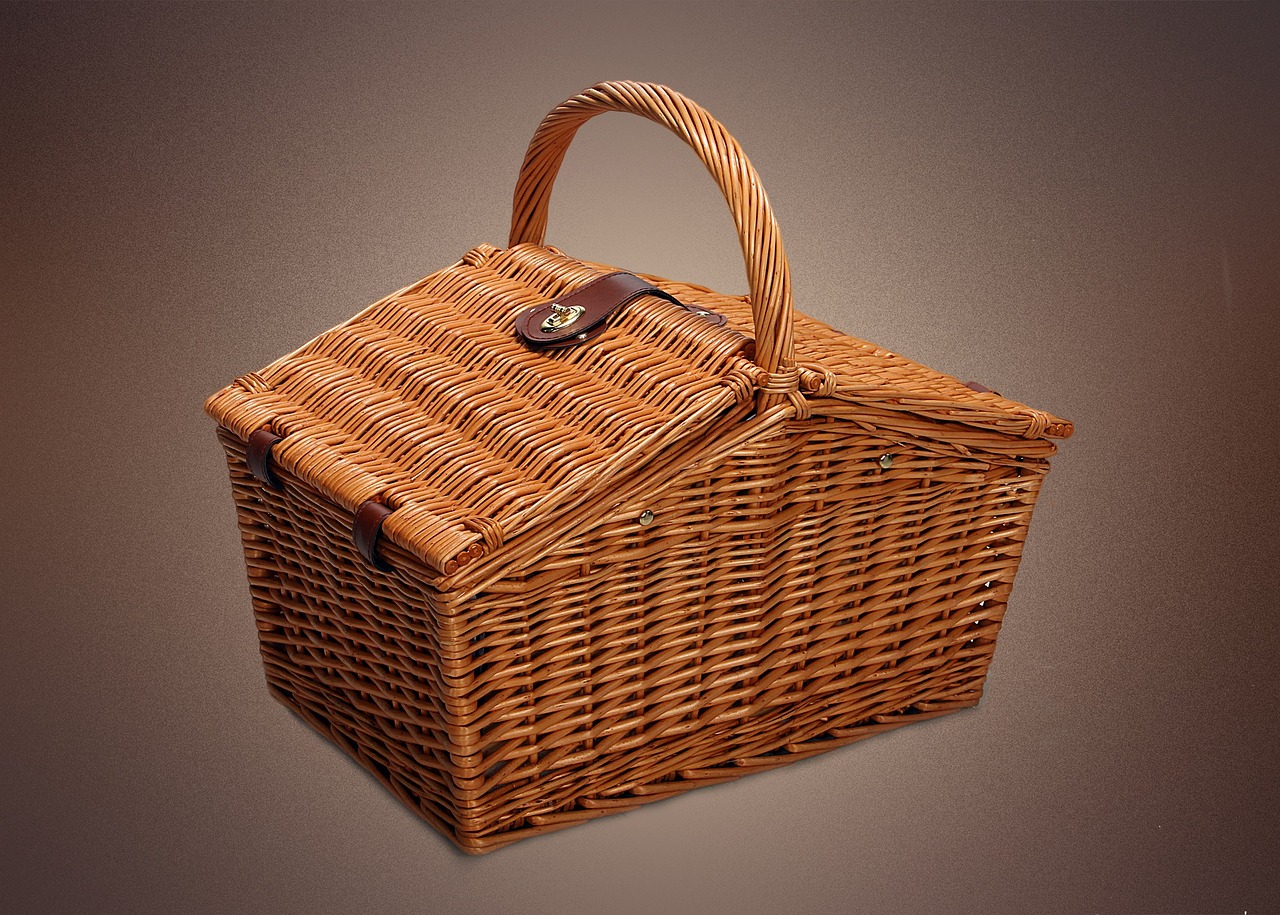
Leave No Trace Principles
The are a set of guidelines designed to promote responsible outdoor ethics. They serve as a reminder that our actions in nature can have lasting effects on the environment. By following these principles, we can ensure that our picnics and other outdoor activities do not harm the beauty of the natural world. So, what exactly are these principles, and how can we incorporate them into our picnic plans?
First and foremost, it’s important to understand that Leave No Trace is not just about picking up after ourselves. It’s about being mindful of our entire presence in nature. Each principle addresses a specific aspect of our outdoor experience, encouraging us to minimize our impact. Here’s a quick overview of the seven principles:
| Principle | Description |
|---|---|
| 1. Plan Ahead and Prepare | Proper planning helps to ensure that you have everything you need for your picnic while minimizing waste and disturbance. |
| 2. Travel and Camp on Durable Surfaces | Stick to established trails and campsites to prevent damage to fragile ecosystems. |
| 3. Dispose of Waste Properly | Pack out all trash, leftover food, and waste to keep the area clean. |
| 4. Leave What You Find | Preserve the environment by not taking natural or cultural artifacts. |
| 5. Minimize Campfire Impact | Use a portable stove for cooking and avoid building campfires unless necessary. |
| 6. Respect Wildlife | Observe animals from a distance and do not feed them. |
| 7. Be Considerate of Other Visitors | Keep noise levels down and respect the experiences of others in nature. |
By integrating these principles into your picnic planning, you can create a more sustainable and enjoyable outdoor experience. For example, when you plan ahead, you can bring all the necessary supplies, including reusable containers and utensils, which ties into the idea of minimizing waste. Furthermore, by choosing a picnic spot that is already established, you help protect the surrounding flora and fauna.
Additionally, when it comes to waste, it’s crucial to have a system in place. Bring a trash bag to collect all your waste, and consider a separate bag for recyclables. This simple act not only helps keep the area clean but also sets a positive example for others enjoying the outdoors.
Finally, remember that nature is a shared space. By being considerate of other visitors, you help foster a sense of community and respect in the great outdoors. Whether it’s by keeping your voice down or sharing space on a popular trail, these small gestures go a long way in preserving the serenity of nature.
Incorporating the Leave No Trace Principles into your picnic routine not only enhances your experience but also contributes to the conservation of our beautiful landscapes. So next time you pack your picnic basket, remember that every small action counts towards a healthier planet!
- What are the Leave No Trace Principles? They are guidelines designed to help minimize human impact on the environment while enjoying outdoor activities.
- How can I implement these principles during my picnic? By planning ahead, using reusable items, and properly disposing of waste, you can easily follow these principles.
- Why is it important to respect wildlife? Respecting wildlife helps maintain natural ecosystems and ensures that animals remain wild and healthy.
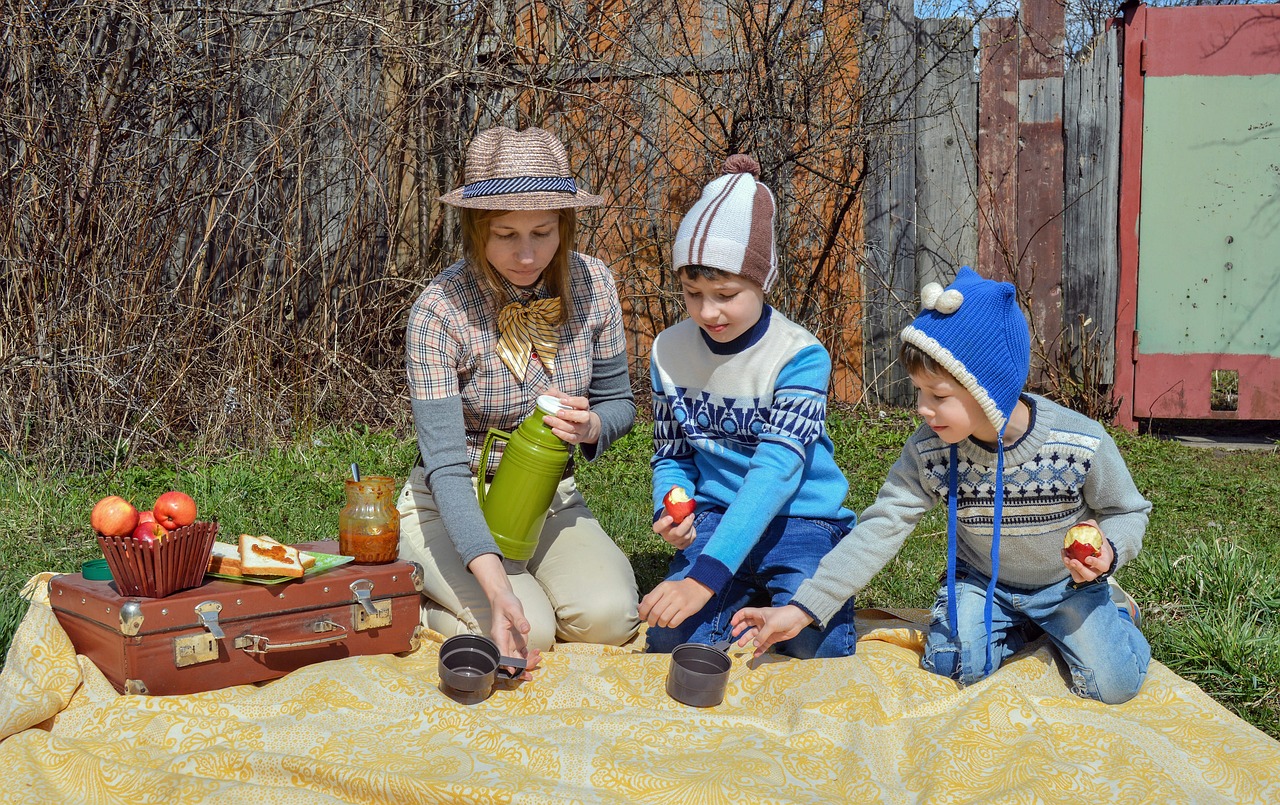
Engaging in Nature Conservation
When you think about picnics, the first thing that comes to mind might be delicious food, laughter, and quality time with friends and family. But what if I told you that you could also make a positive impact on the environment while enjoying your outdoor feast? Engaging in nature conservation during your picnic can enhance your experience and help protect the beautiful landscapes we all love. By taking a few simple steps, you can contribute to the preservation of our natural spaces and inspire others to do the same.
One of the most rewarding ways to engage in nature conservation during your picnic is to participate in local conservation efforts. This could mean volunteering for a clean-up event at your favorite park or joining a tree-planting initiative. Imagine the satisfaction of knowing that while you’re enjoying a sunny day with your loved ones, you’re also helping to restore a local habitat. These activities not only benefit the environment but also foster a sense of community and connection with nature.
Another impactful way to engage in conservation is by educating yourself and your picnic companions about the local ecosystem. Before your picnic, take some time to research the flora and fauna that inhabit the area. Share interesting facts and stories with your friends as you enjoy your meal. For instance, did you know that certain plants can only grow in specific conditions? Or that some animals are endangered and rely on healthy habitats to survive? This knowledge can spark meaningful conversations and deepen your appreciation for the environment.
Furthermore, consider incorporating eco-friendly activities into your picnic plans. Why not organize a nature scavenger hunt? Create a list of items found in the local ecosystem, such as unique leaves, interesting rocks, or specific bird species. As you search for these items, you’ll not only have fun but also develop a greater awareness of your surroundings. This interactive approach encourages everyone to engage with nature in a hands-on way, reinforcing the importance of conservation.
Moreover, you can also support local conservation organizations by making a donation or participating in their events. Many organizations host educational workshops, guided nature walks, and volunteer opportunities that allow you to contribute while learning more about conservation efforts. You can even use your picnic as a platform to raise awareness about these initiatives. Set up a small information booth at your picnic, share pamphlets, or simply talk to your friends about the importance of supporting local conservation efforts.
Lastly, remember that every little action counts. As you enjoy your picnic, be mindful of your waste and make a conscious effort to leave the area cleaner than you found it. This means picking up after yourself, recycling when possible, and disposing of waste properly. By practicing these habits, you not only preserve the beauty of the outdoors but also set a positive example for others. It’s like planting a seed of environmental responsibility that can grow and inspire those around you.
- What are some easy ways to engage in nature conservation during a picnic?
Participate in local clean-up events, educate yourself and others about the local ecosystem, and incorporate eco-friendly activities like scavenger hunts. - How can I support local conservation organizations?
You can donate, volunteer for events, or spread awareness about their initiatives during your picnic. - Why is it important to leave no trace during a picnic?
Leaving no trace helps preserve natural spaces for future generations and protects wildlife habitats from pollution and disruption.
Frequently Asked Questions
- What are some eco-friendly food options for a picnic?
Choosing organic, locally-sourced, and seasonal foods not only supports local economies but also reduces your environmental impact. Think about packing fresh fruits, veggies, and whole foods that are minimally processed. This way, you enjoy delicious food while being kind to the planet!
- How can I make my picnic supplies more sustainable?
Opt for reusable plates, utensils, and containers instead of disposable ones. Not only does this cut down on waste, but it also enhances your picnic experience. Imagine the joy of enjoying a meal on a beautiful plate rather than a flimsy paper one!
- What are biodegradable and compostable items?
Biodegradable items break down naturally over time, while compostable items can turn into nutrient-rich soil when disposed of correctly. Incorporating these products into your picnic helps minimize landfill waste, making your outing more eco-friendly!
- How do I set up a compost bin at my picnic?
Setting up a compost bin is simple! Bring a container for food scraps like fruit peels and napkins. Make sure to educate your picnic buddies on what can go in there. It's a great way to manage waste and enrich the soil for future picnics!
- What are some sustainable beverage options for picnics?
Look for beverages in eco-friendly packaging or consider buying in bulk. You can also bring a reusable water bottle filled with filtered water. This not only reduces plastic waste but keeps you hydrated while you enjoy the great outdoors!
- What materials should I look for in eco-friendly picnic blankets?
Seek blankets made from sustainable materials like organic cotton, recycled polyester, or bamboo. They are not only stylish but also reduce your environmental footprint, making your picnic both comfortable and eco-conscious!
- How can I manage waste effectively during my picnic?
Implement a waste management strategy by sorting recyclables, composting, and disposing of waste responsibly. Bring separate bags for trash, recycling, and compost to keep everything organized and ensure a cleaner environment!
- What are Leave No Trace principles?
Leave No Trace principles are guidelines designed to help outdoor enthusiasts minimize their impact on nature. They include practices like packing out what you pack in, staying on trails, and respecting wildlife. Following these principles helps preserve the natural beauty for everyone!
- How can I engage in nature conservation during my picnic?
Participate in local conservation efforts by picking up trash or volunteering for a nearby environmental initiative. Not only does this enhance your connection to nature, but it also supports the health of the ecosystems you enjoy during your outdoor gatherings!



















